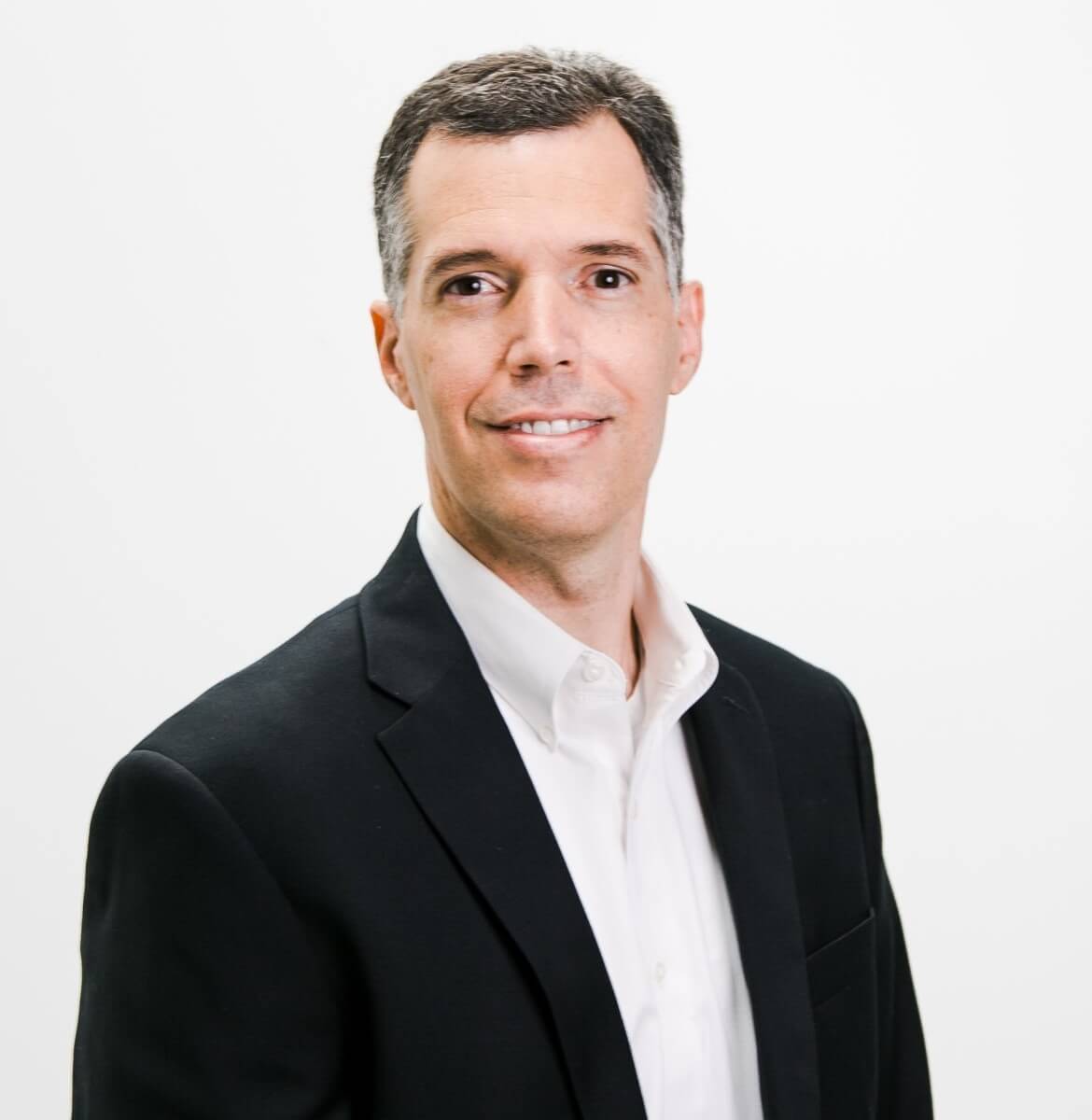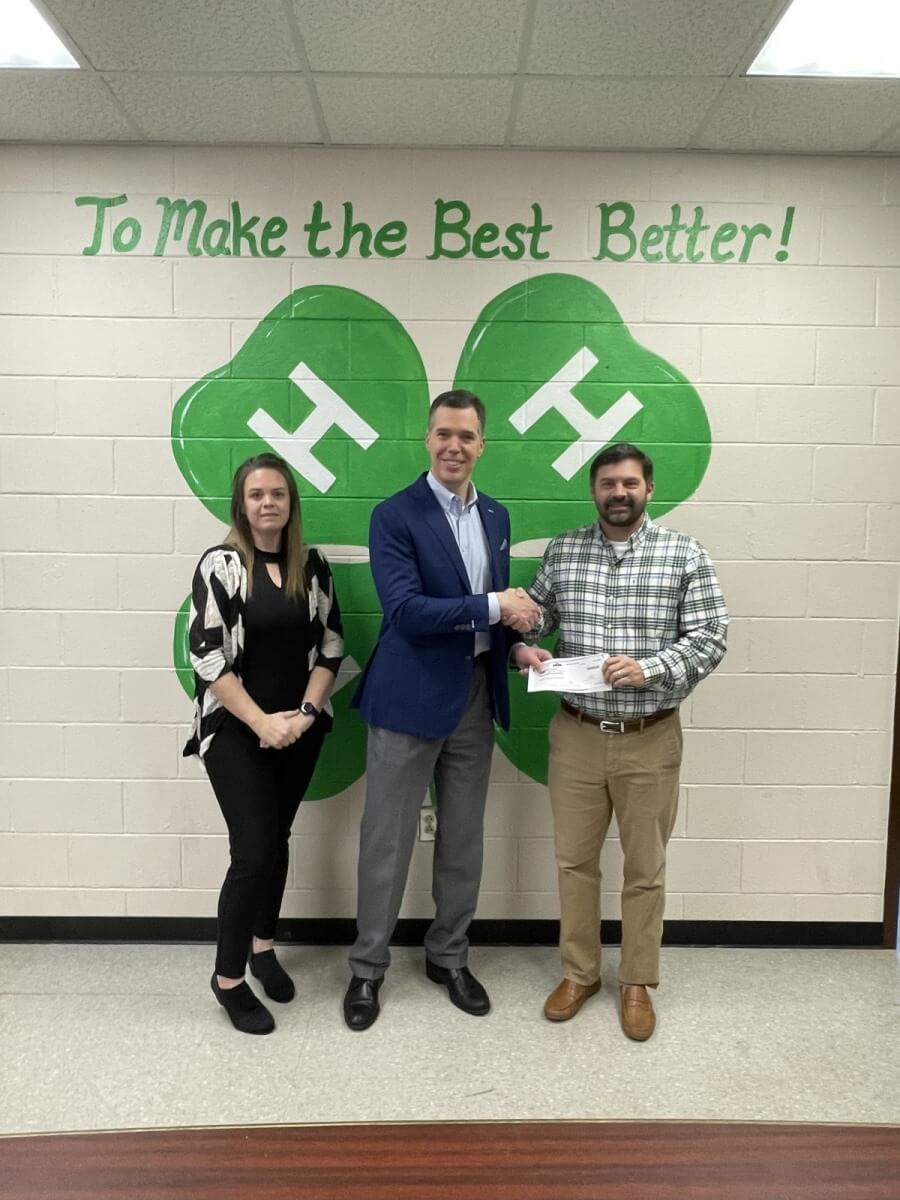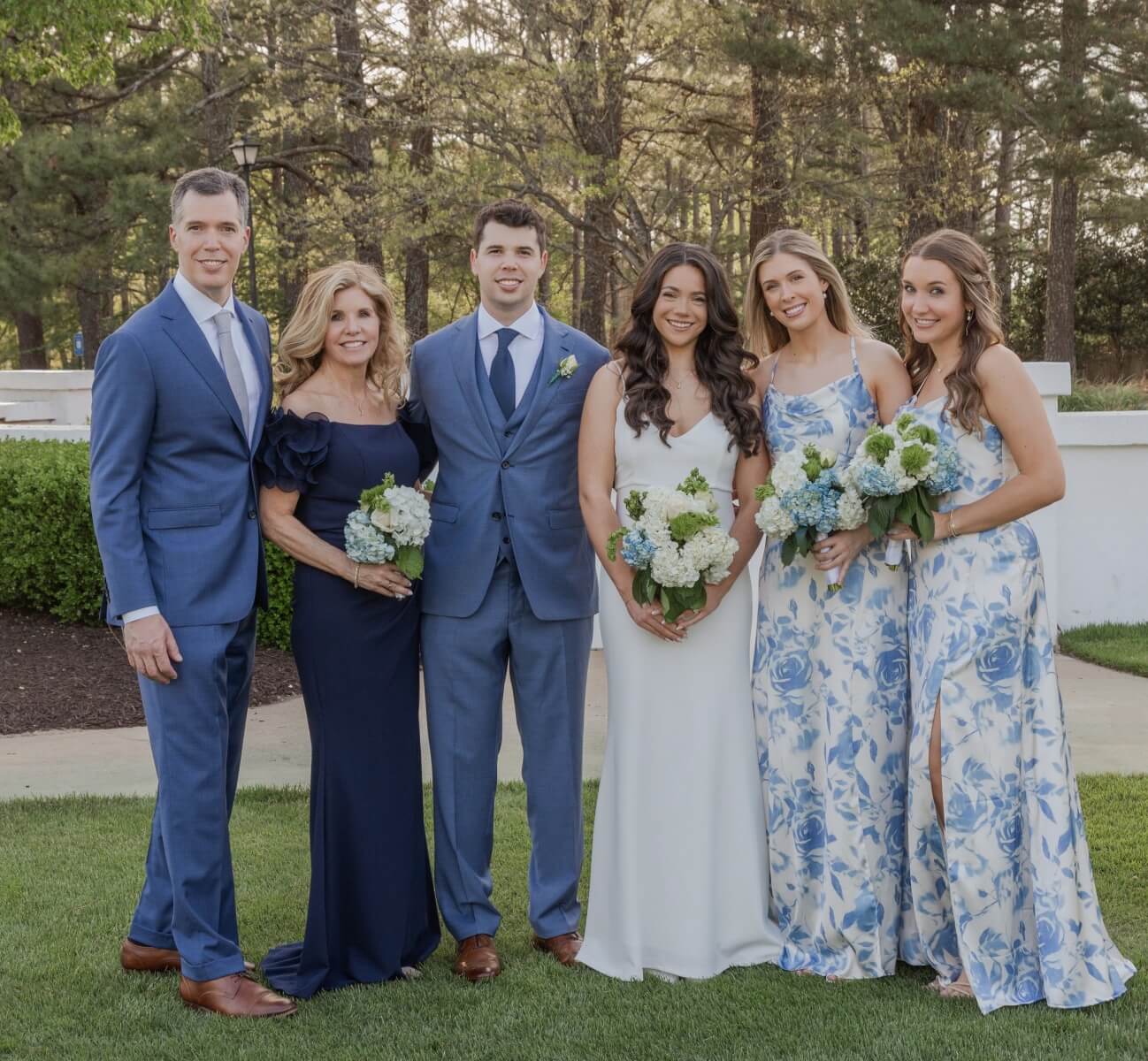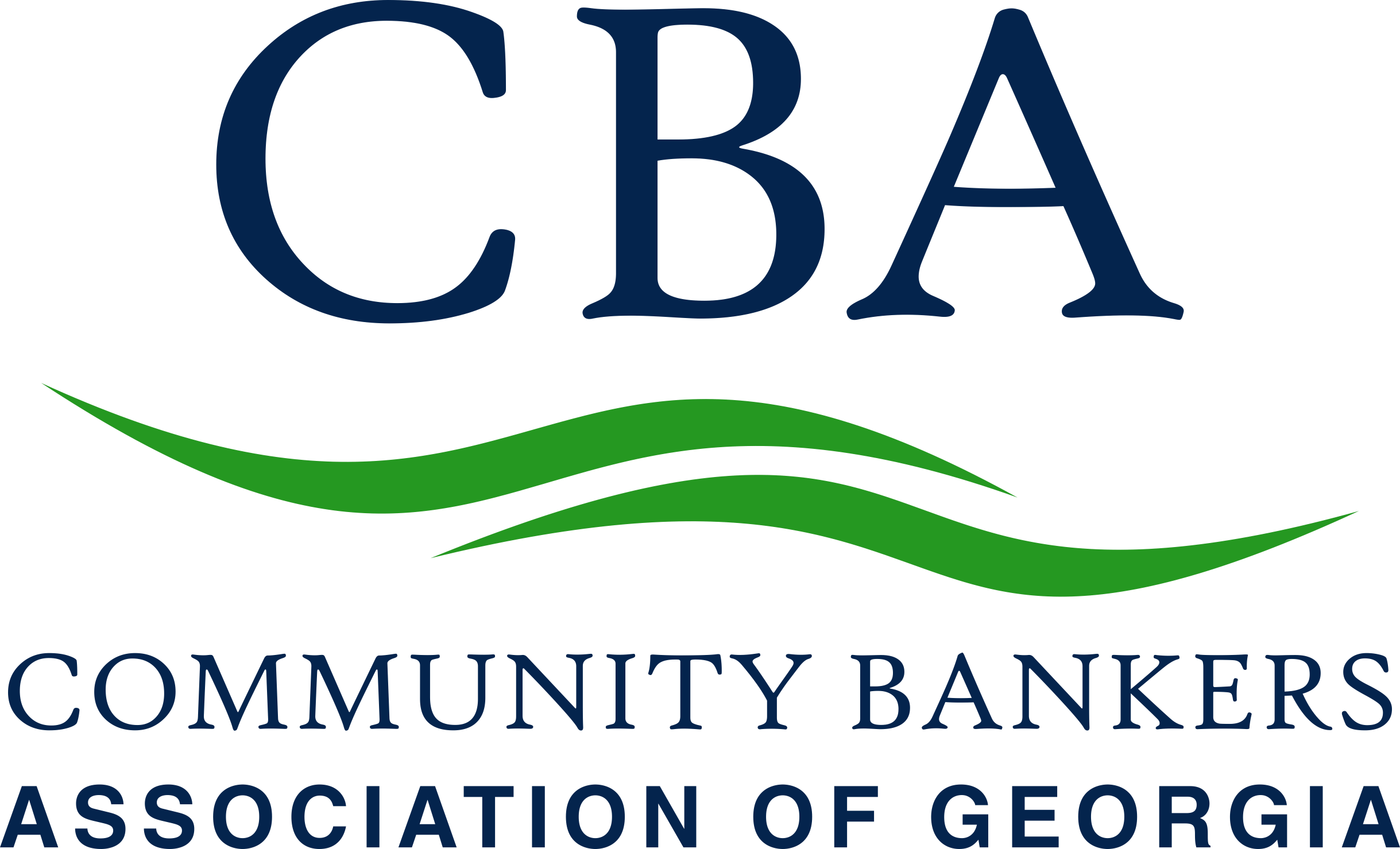Reflections from Chairman Mike Sale
At the closing session of this year’s Connect Conference, incoming Chairman Mike Sale of The Commercial Bank gave an insightful message about his 30-year journey of learning the importance and power of community banking. The following is a transcript of his remarks:
 It is an honor to represent you as this year’s CBA Chairman. It is an honor because of who you are, what you represent, and what you do for your communities across Georgia.
It is an honor to represent you as this year’s CBA Chairman. It is an honor because of who you are, what you represent, and what you do for your communities across Georgia.
Community Banking is vital and must be protected and defended for not only our current generation of community banks but for future generations as well. To me, Community Banking is the most perfect display of servant leadership because community bankers place people over profit, prioritizing relationships, community development, and responsive personal service over immediate gains. We know better than most that a rising tide lifts all boats and any business action that is good for our customers or good for our communities will ultimately be good for the bank.
My first lesson on the importance of community banking began right after college. My first job after graduation was with Tri-County Bank in Royston, approximately 30 miles northeast of Athens. It was there that I was exposed to what a strong community bank means to a community. This bank had a motto that had been credited to its founder. The motto was “Behind all community progress, stands a good bank.” To be honest, the 22-year-old me didn’t really understand the meaning of what those words meant. On the surface, it sounded a little arrogant. I wasn’t sure of the meaning, but my education of this motto was about to begin by watching this community bank and their bankers in action.
These bankers were everywhere in this community. They were at all the rotary club meetings, the little league teams, the hospital boards, the church deacon boards. They sponsored everything. I would later learn that this is what community bankers do but it seemed unusual at the time. I also noticed something unique about the customers of this bank. They seemed to have as much pride in their community bank as the bankers did about our community. As a new banker, I would often meet customers for the first time and often right after telling me their name, they would tell me how many years they had banked there. They carried it like a badge of honor whether it was for 50 years or just a couple of years. As a new banker, I picked up on how many customers would refer to the bank as “we” or “us”. For example, a customer would ask if “we” are going to be sponsoring the concert, or if “we” are going to set up the bank tent at the event. I noticed they didn’t ask if “the bank” was sponsoring. They used “we” time and time again. This was a subtle sign that this bank, through years of supporting its community, had become so ingrained in the minds of their customers that the line between customer and bank was blurred to them. The customers felt they were as much a part of the bank as I was as an employee due to the commitment this bank had made over the years to its community.
They sponsored everything. I would later learn that this is what community bankers do but it seemed unusual at the time. I also noticed something unique about the customers of this bank. They seemed to have as much pride in their community bank as the bankers did about our community. As a new banker, I would often meet customers for the first time and often right after telling me their name, they would tell me how many years they had banked there. They carried it like a badge of honor whether it was for 50 years or just a couple of years. As a new banker, I picked up on how many customers would refer to the bank as “we” or “us”. For example, a customer would ask if “we” are going to be sponsoring the concert, or if “we” are going to set up the bank tent at the event. I noticed they didn’t ask if “the bank” was sponsoring. They used “we” time and time again. This was a subtle sign that this bank, through years of supporting its community, had become so ingrained in the minds of their customers that the line between customer and bank was blurred to them. The customers felt they were as much a part of the bank as I was as an employee due to the commitment this bank had made over the years to its community.
As I spent more time in this industry, I saw all the things made possible by community bankers. Things like providing financing for the small business owner so they could expand and provide more local jobs. It was taking that new home buyer by the hand, exploring the options and getting that person in their first home. Most of us can point to a time in our career where we took a chance on someone because we believed in the client and their plan for the future. And the fact that we often do these things with regulators bogging us down with sometimes unrealistic expectations and processes, unfair competition from government subsidized competitors or tax cheating credit unions make it even more amazing. The truth is that every day you all go to work, and you WIN for your clients, you WIN for your communities, and you WIN for your shareholders even though we most often compete on an unleveled playing field.
I spent 5 years with Tri-County Bank learning from great community bankers. Then I spent the next 12 years with the Synovus affiliate in Athens. When I joined Synovus in 1998, our local affiliate had many characteristics of a community bank, but before I left, it certainly had changed to a more regional bank structure.
When I was approached in 2010 to run an almost 90-year-old community bank, I can’t say that I “jumped” at the chance as I had plenty of reservations about leaving a job and coworkers that I loved, not to mention 2010 wasn’t the most stable time to be in banking in Georgia. But despite all of this, I accepted the position of President and CEO of The Commercial Bank where I have spent the last 15 years.
This is where my latest journey and lessons on the power of community banking continued. While I was interviewing for the position at The Commercial Bank, I was very honest about my shortcomings. I explained my experience and told them about the areas in which I was confident that I could be successful. However, I was also very honest that I had limited experience in loan and deposit operations, with ALCO, and several other gaps in my knowledge and experience. I was assured not to worry, that the bank had recently promoted a young man named Larry to Chief Operations Officer that would handle those areas. I was to focus on lending and growing the bank so with that in mind, I accepted the position.
I spent the first couple of weeks getting to know the staff and customers of the bank. Our Chief Operations Officer Larry and I were off to a great start working together, but in my third week, he would be starting his first year of LSU banking school. The Sunday morning that he left for banking school, I left church to several missed calls, one being from my Board Chairman. I returned the phone call with my mind racing as to why my Board Chairman had called on a Sunday morning. I still remember the conversation well as he immediately asked if I had heard about Larry, I replied, “No.” He said “Mike, I hate to tell you this, but Larry was killed this morning in an accident on his way to the airport to fly to Baton Rouge”. Larry was only 30 years old and left a wife, and two daughters aged 3 and 5.
After processing the personal side of this tragedy most of Sunday, by Sunday night my job required me to turn my focus to the bank. At the time, we had a staff of 30 employees and Larry was their leader, coworker and friend. They were all hurting. Also, when Larry left this life, he took an enormous amount of bank information with him, information and passwords that only he knew. I realized that I had quite a challenge on my hands.
But through this challenge is when I received another lesson of how uniquely good community bankers are. Keep in mind, I had been with Synovus for the 12 preceding years. At Synovus, we were not members of the CBA so my personal contacts around the state were not strong. But it did not matter. As this news about Larry spread, by Monday afternoon I was getting phone calls from bankers around the state that I did not know, but they heard of our tragedy and wanted to offer to help. Most were offering their own staff as a resource if I needed any assistance as I moved forward. The staff at the CBA reached out and offered their assistance. And it wasn’t only the bankers. Bank vendors, many represented in this room today, were quick to offer support. It was a tragic and incredibly stressful time, but it was made easier by the overwhelming support that I received from our community banking community.
We also decided to raise funds for Larry’s children’s future education expenses. Bankers, bank vendors, and even his LSU banking school classmates, whom Larry never had the opportunity to meet, contributed to this fund. Due to this generosity 15 years ago, we were able to distribute approximately $20,000 to Larry’s daughters over the last couple of years as they pursue college degrees in marketing and nursing. I was a new bank President in an extremely difficult situation, but my new community banking community lifted our bank up during our time of need and I will always be grateful. My family also experienced the power and reach of community bankers. Many of you know my wife, Angie. We have 3 children- Amber, Mason and Amelia and a new daughter-in-law, Lauren. My daughters particularly learned the power of community bankers, but their experience wasn’t always positive. When they were old enough to begin dating, they learned that no matter where a particular young man lived in the State of Georgia, their dad had a way of finding out more information about him and his family better than a GBI background check. I remember getting a call from Angie one afternoon telling me that Amelia had been asked to go to the prom in Swainsboro, Georgia. Keep in mind, Swainsboro is 2.5 hours from Athens and Amelia is the baby girl in the family. Angie asked what she should tell her. I replied, “Tell her she can go to the Swainsboro prom if Milton Gray at Citizens First Bank of Swainsboro says she can go.” Of course, neither of them knew who Milton Gray was at the time but I had known Milton for several years. I called Milton that afternoon and before I got home from work, I knew all I needed to know about the young man and his family. Milton’s wife was a school administrator at the high school, so I even knew generally what kind of student he was. Milton’s wife would be chaperoning the prom and would keep an eye on Amelia. They even offered for Amelia to stay with them after the dance. Thanks to Milton, Amelia got to go to the Swainsboro prom. That is the power of community banking. Younger moms and dads in the room should take full advantage of it.
My family also experienced the power and reach of community bankers. Many of you know my wife, Angie. We have 3 children- Amber, Mason and Amelia and a new daughter-in-law, Lauren. My daughters particularly learned the power of community bankers, but their experience wasn’t always positive. When they were old enough to begin dating, they learned that no matter where a particular young man lived in the State of Georgia, their dad had a way of finding out more information about him and his family better than a GBI background check. I remember getting a call from Angie one afternoon telling me that Amelia had been asked to go to the prom in Swainsboro, Georgia. Keep in mind, Swainsboro is 2.5 hours from Athens and Amelia is the baby girl in the family. Angie asked what she should tell her. I replied, “Tell her she can go to the Swainsboro prom if Milton Gray at Citizens First Bank of Swainsboro says she can go.” Of course, neither of them knew who Milton Gray was at the time but I had known Milton for several years. I called Milton that afternoon and before I got home from work, I knew all I needed to know about the young man and his family. Milton’s wife was a school administrator at the high school, so I even knew generally what kind of student he was. Milton’s wife would be chaperoning the prom and would keep an eye on Amelia. They even offered for Amelia to stay with them after the dance. Thanks to Milton, Amelia got to go to the Swainsboro prom. That is the power of community banking. Younger moms and dads in the room should take full advantage of it.
Although the start of my time at The Commercial Bank started under difficult circumstances, through the dedication of our team at the bank, we rose from it. Over the last 15 years we have expanded from 2 to 5 locations, growing from $90 million in assets to $425 million in assets, and last year celebrated our 100th anniversary. Perhaps our greatest financial achievement is that the Commercial Bank will have its 15th consecutive year of net income growth this year. The bankers in this room understand the challenge it is to grow earnings every year while expanding over a 15-year period primarily due to changes in interest rates affecting margins and business activity from year to year. But you may be surprised to know that it has not been a point of emphasis for us at the bank. If you ask one of our team members, they won't be able to tell you what our earnings target is this year. They won’t be able to tell you how much net profit was earned last year. Only the executive officers could even tell you about our 15-year earnings streak. This isn’t because we want to keep them in the dark or we aren’t proud of our financial achievements. But it is as I have told them, our balance sheet and income statements are just the score card.  It is just a measure and reflection of how well we are taking care of our communities. Our communication to the team is about the habits and actions required to take care of our customers and our community as I feel as long as we do this exceptionally well, the financial results will follow. That is what community banking has taught me over the last 30 years. This is what my experience and learning from many of you over the years has taught me. This is what community bankers do. If we do this well, everything else will fall into place. This is why we are a financial lifeline for so many people and small businesses from Trenton to St. Mary’s, from Bainbridge to Clayton and all the points in between.
It is just a measure and reflection of how well we are taking care of our communities. Our communication to the team is about the habits and actions required to take care of our customers and our community as I feel as long as we do this exceptionally well, the financial results will follow. That is what community banking has taught me over the last 30 years. This is what my experience and learning from many of you over the years has taught me. This is what community bankers do. If we do this well, everything else will fall into place. This is why we are a financial lifeline for so many people and small businesses from Trenton to St. Mary’s, from Bainbridge to Clayton and all the points in between.
Thank you for all you do in service to your banks, your communities, and our community banking association. And thank you John, Lori, Lindsay, Becky, Ellen, Connie and Gwen, our incredible CBA Team, for your exceptional support serving our industry. We couldn’t do our jobs as effectively without your dedication to us. Thank you!
